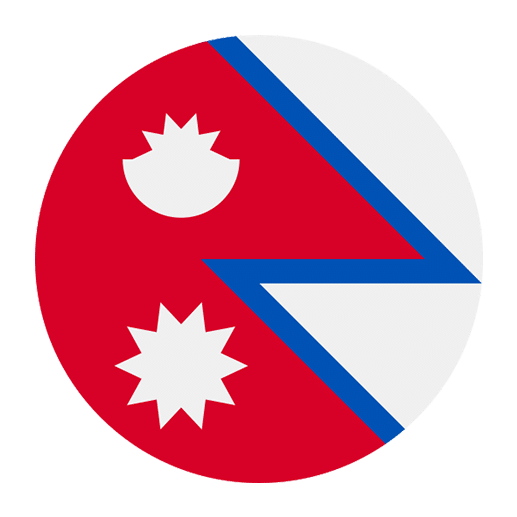Nepali, the official language of Nepal, is a fascinating and vibrant language spoken by millions of people. Learning Nepali can be an enriching experience, providing insights into Nepal’s rich culture and traditions. As with any language, mastering the use of prepositions is crucial for effective communication. Prepositions in Nepali, much like in English, help in expressing time, place, and direction. This article aims to guide English speakers through the commonly used Nepali prepositions, elucidating their meanings and usage with examples.
Understanding Nepali Prepositions
Prepositions in Nepali, similar to those in English, are words that link nouns, pronouns, and phrases to other words within a sentence. They typically indicate relationships regarding time, place, and direction. Mastering these prepositions is essential as they often differ in structure and usage from English.
Prepositions of Time
Time-related prepositions in Nepali help in expressing when an event occurs. Here are some commonly used prepositions of time in Nepali:
1. मा (ma) – In, At
The preposition “मा” is extensively used to denote time. It can indicate months, years, and specific times of the day.
– Example: म जनवरीमा नेपाल जान्छु। (ma janwarima nepal janchu.) – I go to Nepal in January.
– Example: म बिहान ६ बजे उठ्छु। (ma bihana 6 baje uthchu.) – I wake up at 6 in the morning.
2. पछि (pachi) – After
“पछि” is used to signify that something happens after a certain event or time.
– Example: खाना पछि म पढ्छु। (khana pachi ma padhchu.) – I study after eating.
3. अघि (aghi) – Before
“अघि” indicates that something occurs before a certain event or time.
– Example: कक्षाअघि म कफी पिउँछु। (kaksha aghi ma coffee piunchu.) – I drink coffee before class.
4. देखि (dekhi) – From, Since
“देखि” is used to denote the starting point of time.
– Example: म बिहानदेखि काम गर्छु। (ma bihana dekhi kam garchu.) – I work from the morning.
5. सम्म (samma) – Until, Up to
“सम्म” indicates the end point of a time period.
– Example: म बेलुकी ६ बजेसम्म काम गर्छु। (ma beluki 6 bajesamma kam garchu.) – I work until 6 in the evening.
Prepositions of Place
Prepositions of place describe the location of something or someone. In Nepali, these prepositions are vital for providing clear directions and locations.
1. मा (ma) – In, At, On
Similar to its use in time, “मा” is also used to indicate location.
– Example: म घरमा छु। (ma gharma chu.) – I am at home.
– Example: किताब टेबलमा छ। (kitab tablema cha.) – The book is on the table.
2. बाहिर (bahira) – Outside
“बाहिर” is used to denote the outside of a location.
– Example: कुकुर बाहिर छ। (kukur bahira cha.) – The dog is outside.
3. भित्र (bhitra) – Inside
“भित्र” indicates the inside of a location.
– Example: बिरालो भित्र छ। (biralo bhitra cha.) – The cat is inside.
4. मुनि (muni) – Under, Below
“मुनि” is used to express that something is under or below another object.
– Example: कुर्सी टेबलमुनि छ। (kursi tablemuni cha.) – The chair is under the table.
5. माथि (mathi) – Above, Over
“माथि” denotes that something is above or over another object.
– Example: पंखा टाउकोमाथि छ। (pankha taukomathi cha.) – The fan is above the head.
6. छेउमा (cheuma) – Beside, Next to
“छेउमा” is used to indicate proximity or that something is beside or next to another object.
– Example: बोट छेउमा म बस्छु। (bot cheuma ma baschu.) – I sit next to the tree.
Prepositions of Direction
Direction-related prepositions help in understanding the movement or direction of an action. Here are some commonly used directional prepositions in Nepali:
1. तर्फ (tarf) – Towards
“तर्फ” is used to indicate movement towards a direction or place.
– Example: म स्कूलतर्फ जाँदैछु। (ma school tarf jandaichu.) – I am going towards the school.
2. बाट (bata) – From
“बाट” signifies the starting point of movement.
– Example: म काठमाडौँबाट आएको हुँ। (ma kathmandu bata aeko hu.) – I came from Kathmandu.
3. सम्म (samma) – To, Up to
“सम्म” can also be used to express the endpoint of movement.
– Example: म पोखरसम्म हिंडें। (ma pokhara samma hinde.) – I walked up to Pokhara.
4. भित्र (bhitra) – Into
“भित्र” can also denote movement into a place.
– Example: म कोठाभित्र गएँ। (ma kothabhitra gae.) – I went into the room.
5. बाहिर (bahira) – Out of
“बाहिर” can indicate movement out of a place.
– Example: ऊ घरबाहिर निस्कियो। (u gharbahira niskio.) – He went out of the house.
Combining Prepositions in Sentences
Combining prepositions effectively can help in creating more complex and detailed sentences in Nepali. Here are some examples of sentences that combine prepositions of time, place, and direction:
– म बिहान ६ बजेदेखि बेलुकी ६ बजेसम्म अफिसमा काम गर्छु। (ma bihana 6 bajedekhi beluki 6 bajesamma office ma kam garchu.) – I work in the office from 6 in the morning until 6 in the evening.
– ऊ स्कुलबाट घरतर्फ हिंड्दैछ। (u school bata ghar tarf hindaichu.) – He is walking towards home from school.
– म किताब टेबलमाथि राख्छु। (ma kitab table mathi rakhchu.) – I put the book on the table.
– हामी बाहिर पार्कमा खेल्छौं। (hami bahira park ma khelchhau.) – We play outside in the park.
Practice Exercises
To solidify your understanding of Nepali prepositions, here are some practice exercises. Try translating the following English sentences into Nepali, using the correct prepositions.
1. I will meet you at the cafe at 3 PM.
2. The cat is under the table.
3. He came from India.
4. She is going towards the market.
5. We will study after dinner.
Answers:
1. म तिमीलाई ३ बजे क्याफेमा भेट्छु। (ma timilai 3 baje cafe ma bhetchu.)
2. बिरालो टेबलमुनि छ। (biralo table muni cha.)
3. ऊ भारतबाट आएको हो। (u bharat bata aeko ho.)
4. ऊ बजारतर्फ जाँदैछे। (u bazar tarf jandaiche.)
5. हामी खाना पछि पढ्छौं। (hami khana pachi padhchau.)
Conclusion
Mastering prepositions in Nepali is crucial for anyone looking to become proficient in the language. These small yet significant words help in providing clarity and detail to your sentences, making your communication more effective. By understanding and practicing the use of prepositions related to time, place, and direction, you can significantly improve your Nepali language skills. Keep practicing, and immerse yourself in the language to gain fluency and confidence. Happy learning!

